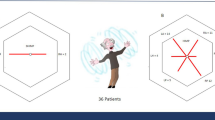Abstract
The most popular objective physiologic test for detecting hearing loss that is in use today is the ABR, however it is not frequency specific. The frequency specific tool available for evaluation of hearing is ASSR. The study is aimed to assess the ability of ASSR to estimate hearing thresholds and identify the ideal modulation frequency in hearing impaired personnel. All subjects and controls were subjected to PTA to determine presence/absence of hearing loss, and the nature and configuration of the hearing loss if any. The subjects were then subjected to ASSR testing to objectively ascertain hearing thresholds. The PTA thresholds obtained and the hearing thresholds obtained by ASSR were correlated in this study. The study was carried out in 100 subjects under the age of 50 years (50 with normal hearing & 50 with impaired hearing by PTA) after obtaining informed consent. Moderate correlation was found between PTA and ASSR thresholds only in certain frequencies while in other frequencies the correlation though present, was low. This study concluded that ASSR system could be used to estimate hearing thresholds only approximately as no significant linear correlations were found between PTA thresholds and ASSR at the tested frequencies.




Similar content being viewed by others
References
Durmaz A, Karahatay S, Satar B, Birkent H, Hidir Y (2009) Efficiency of stenger test in confirming profound, unilateral pseudohypacusis. J Laryngol Otol 123(08):840
Mahdavi ME, Mokari N, Amiri Z (2011) Educational level and pseudohypacusis in medico-legal compensation claims: a retrospective study. Arch Iran Med 14(1):58–60
Brookhouser PE, Gorga MP, Kelly WJ (1990) Auditory brainstem response results as predictors of behavioral auditory thresholds in severe and profound hearing impairment. Laryngoscope 100:803–810
Swami H, Kumar S (2019) Comparison of frequency-specific hearing thresholds between pure-tone audiometry and auditory steady-state response. Indian J Otol 25:59–65
Aoyagi M, Kiren T, Furuse H, Fuse T (1994) Pure-tone threshold prediction by 80-Hz amplitude-modulation following response. Acta Otolaryngol Suppl 511:7–14
Cone-Wesson B, Dowell RC, Tomlin D, Rance G, Ming WJ (2002) The auditory steady-state response: comparisons with the auditory brainstem response. J Am Acad Audiol 13(4):173–187
Lins OG, Picton TW, Boucher BL, Durieux-Smith A, Champagne SC, Moran LM, Perez-Abalo MC, Martin V, Savio G (1996) Frequency-specific audiometry using steady-state responses. Ear Hear 17(2):81–96
Gorga MP, Neely ST, Hoover BM, Diarking DM, Maning C (2004) Determining the upper limits of stimulation for auditory steady-state response measurements. Ear Hear 25:302–307
Attias J, Buller N, Rubel Y, Raveh E (2006) Multiple auditory steady state responses in children and adults with normal hearing, sensorineural hearing loss, or auditory neuropathy. Ann Otol Rhinol Laryngol 115:268–276
Sininger YS, Abdala C (1996) Hearing threshold as measured by auditory brain stem response in human neonates. Ear Hear 17:395–401
Valdes JL, Perez-Abalo MC, Martin V, Savio G, Sierra C, Rodriguez E, Lins O (1997) Comparison of statistical indicators for the automatic detection of 80 Hz. auditory steady-state responses. Ear Hear 18:420–429
Komazec Z, Lemazic-KOMAZEC S, Jovic R, Nadj C, Savovic S (2010) Comparison between auditory steady-state responses and pure-tone audiometry. Vojnosanit Pregl 67(9):761–765
Ribeiro FM, Carvallo RM, Marcoux AM (2010) Auditory steady-state evoked responses for preterm and term neonates. Audiol Neurootol 15:97–110
Rodrigues GR, Lewis DR, Fichino SN (2010) Steady-state auditory evoked responses in audiological diagnosis in children: a comparison with brainstem evoked auditory responses. Braz J Otorhinolaryngol 76:96–101
Beck RM, Ramos BF, Grasel SS, Ramos HF, Moraes MF, Bento RF (2014) Comparative study between pure tone audiometry and auditory steady state responses in normal hearing subjects. Braz J Otorhinolaryngol 80:35–40
Canale A, Lacilla M, Cavalot AL, Albera R (2006) Auditory steady-state responses and clinical applications. Eur Arch Otorhinolaryngol 263(6):499–503
Ahn JH, Lee HS, Kim YJ, Yoon TH, Chung JW (2007) Comparing pure-tone audiometry and auditory steady state response for the measurement of hearing loss, American Academy of Otolaryngology–Head and Neck Surgery Foundation. University of Ulsan College of Medicine, 388–1 Pungnap-Dong Songpa-Gu, Seoul, 138–736.
Author information
Authors and Affiliations
Corresponding author
Additional information
Publisher's Note
Springer Nature remains neutral with regard to jurisdictional claims in published maps and institutional affiliations.
Rights and permissions
Springer Nature or its licensor (e.g. a society or other partner) holds exclusive rights to this article under a publishing agreement with the author(s) or other rightsholder(s); author self-archiving of the accepted manuscript version of this article is solely governed by the terms of such publishing agreement and applicable law.
About this article
Cite this article
Raghavan, D., Naga, R., Gupta, A. et al. Evaluation of the Viability of Auditory Steady State Response Testing for Detection of Pseudohypacusis in Serving Personnel of the Indian Armed Forces. Indian J Otolaryngol Head Neck Surg 75 (Suppl 1), 83–87 (2023). https://doi.org/10.1007/s12070-022-03270-3
Received:
Accepted:
Published:
Issue Date:
DOI: https://doi.org/10.1007/s12070-022-03270-3



